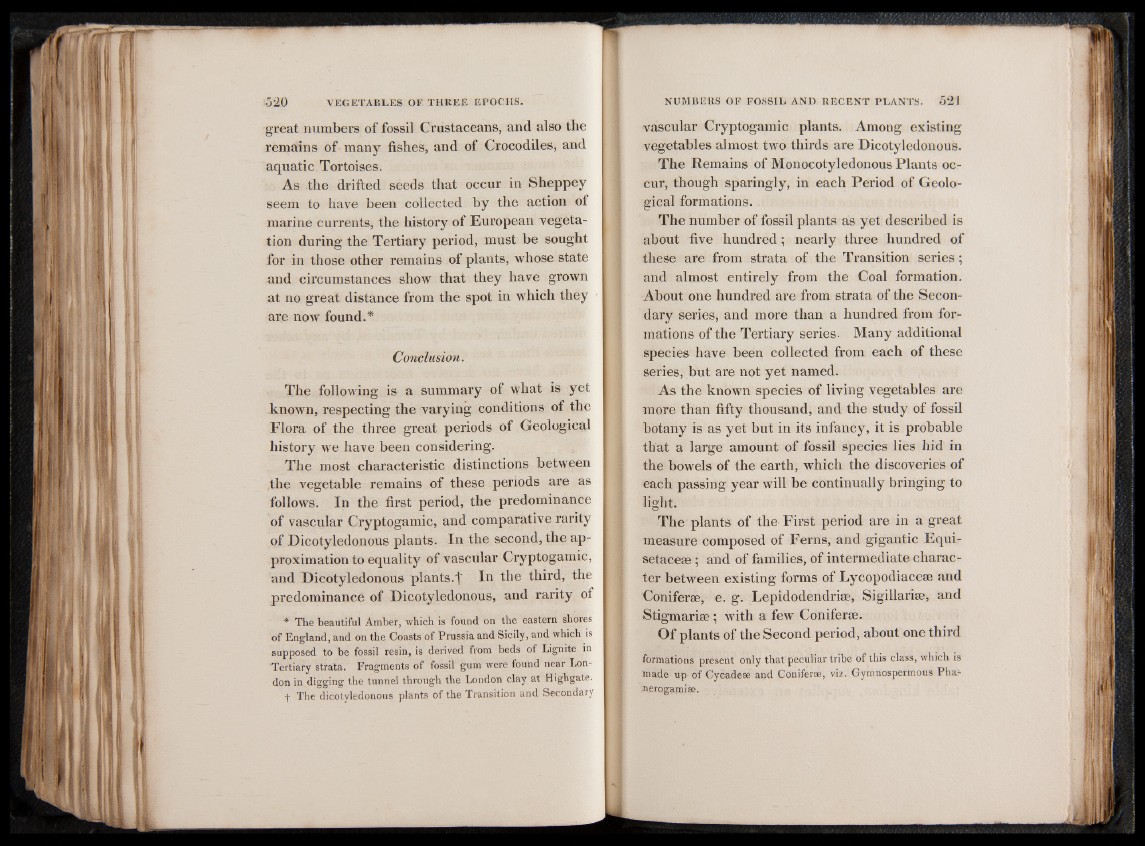
great numbers of fossil Crustaceans, and also the
remains of many fishes, and of Crocodiles, and
aquatic. Tortoises.
As the drifted seeds that occur in Sheppey
seem to have been collected by the action of
marine currents, the history of European vegetation
during the Tertiary period, must be sought
for in those other remains of plants, whose state
and circumstances show that they have grown
at no great distance from the spot in which they
are now found.*
Conclusion.
The following is a summary of what is yet
known, respecting the varying conditions of the
Flora of the three great periods of Geological
history we have been considering.
The most characteristic distinctions between
the vegetable remains of these periods are as
follows. In the first period, the predominance
of vascular Cryptogamie, and comparative rarity
of Dicotyledonous plants. In the second, the approximation
to equality of vascular Cryptogamie,
and Dicotyledonous plants.t In the third, the
predominance of Dicotyledonous, and rarity of
* The beautiful Amber, which is found on the eastern shores
of England, and on the Coasts of Prussia and Sicily, and which is
supposed to be fossil resin, is derived from beds of Lignite in
Tertiary strata. Fragments of fossil gum were found near London
in digging the tunnel through the London clay at Highgate.
-j- The dicotyledonous plants of the Transition and Secondary
vascular Cryptogamie plants. Among existing
vegetables almost two thirds are Dicotyledonous.
The Remains of Monocotyledonous Plants occur,
though sparingly, in each Period of Geological
formations.
The number of fossil plants as yet described is
about five hundred ; nearly three hundred of
these are from strata of the Transition series ;
and almost entirely from the Coal formation.
About one hundred are from strata of the Secondary
series, and more than a hundred from formations
of the Tertiary series. Many additional
species have been collected from each of these
series, but are not yet named.
As the known species of living vegetables are
more than fifty thousand, and the study of fossil
botany is as yet but in its infancy, it is probable
that a large amount of fossil species lies hid in
the bowels of the earth, which the discoveries of
each passing year will be continually bringing to
light.
The plants of the First period are in a great
measure composed of Ferns, and gigantic Equi-
setaceae ; and of families, of intermediate character
between existing forms of Lycopodiaceae and
Coniferæ, e. g. Lepidodendriæ, Sigillariæ, and
Stigmariae ; with a few Coniferæ.
Of plants of the Second period, about one third
formations present only that peculiar tribe of this class, which is
made up of Cyeadese and Coniferæ, viz. Gymnospermous Pha-
nerogamiæ.